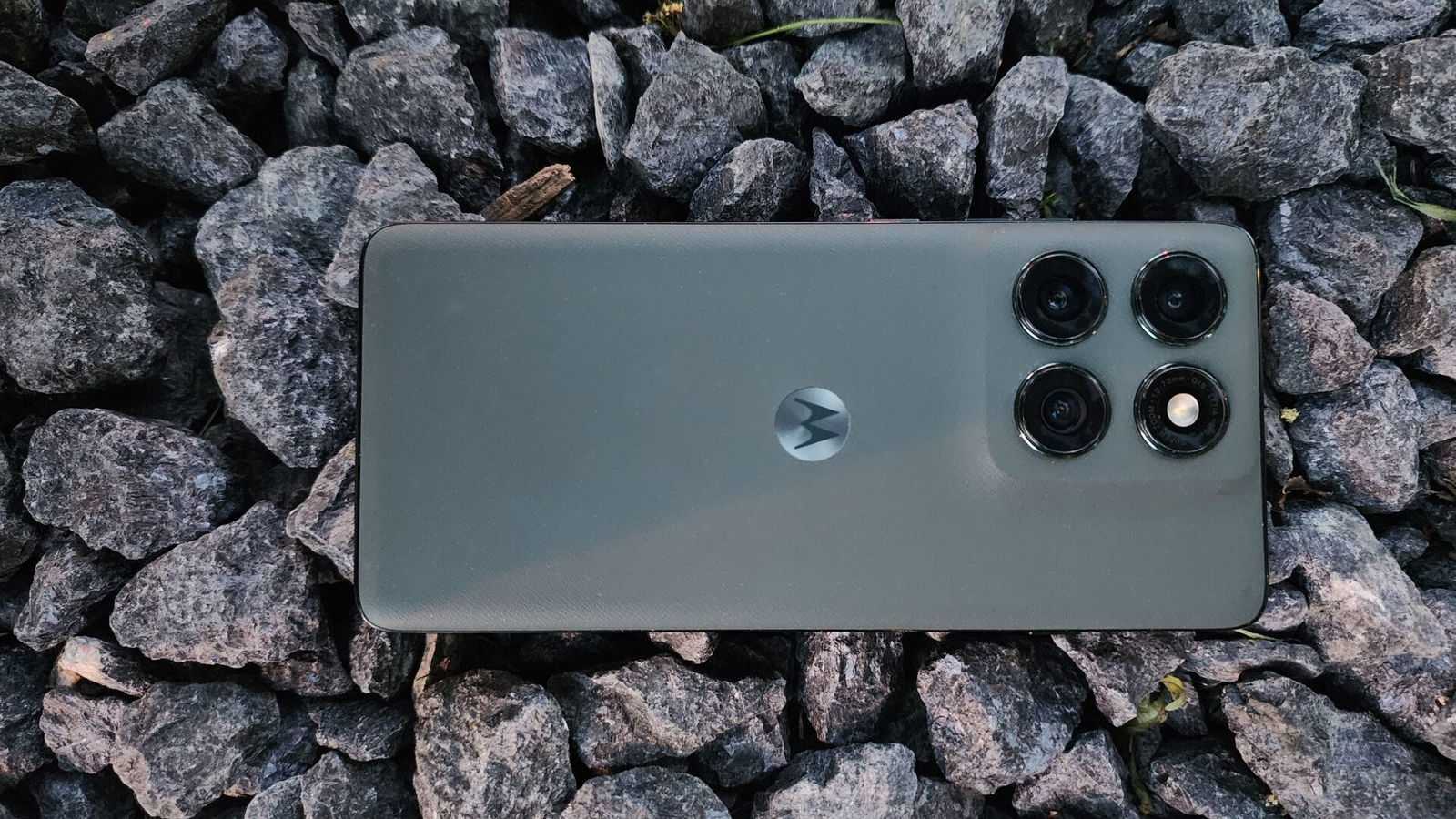Motorola’s 2025 smartphone lineup continues to impress, and the new Motorola Edge might just be its most balanced device yet.
It’s no secret that Motorola’s 2025 smartphone lineup—including both budget and premium devices—has been blowing our socks off at CG in recent months. From this year’s insanely value-priced Moto G 5G to the cutting-edge, foldable flagship that is the Motorola Razr Ultra (2025), Motorola is confidently putting its best foot forward, offering consumers impressive quality options at both ends of the affordability spectrum. Not content to rest on its laurels, however, Motorola is bringing one more device to the Moto family—one that sits right at the fulcrum of the scale, balancing premium smartphone features at a mid-range MSRP, without any of the high-end gimmicks (i.e., styluses or folding screens). Meet the new Motorola Edge (2025).
The Motorola Edge unmistakably shares a great deal of visual DNA with its budget-priced brethren, the Moto G 5G and the Moto G Power, as well as the slightly more expensive Moto G Stylus, adopting the popular vegan leather backing that has adorned nearly all mainline Motorola phones since 2024. Clearly, the move was a hit with consumers, as the company has proudly brought back these finely textured, non-removable coverings for 2025. To my delight, this year’s Motorola Edge variant arrives in a meditative “Deep Forest” green—a pleasant departure from the standard black finishes that single-SKU smartphones tend to receive. It doesn’t hurt that the colourway also speaks to my Xbox gaming sensibilities.
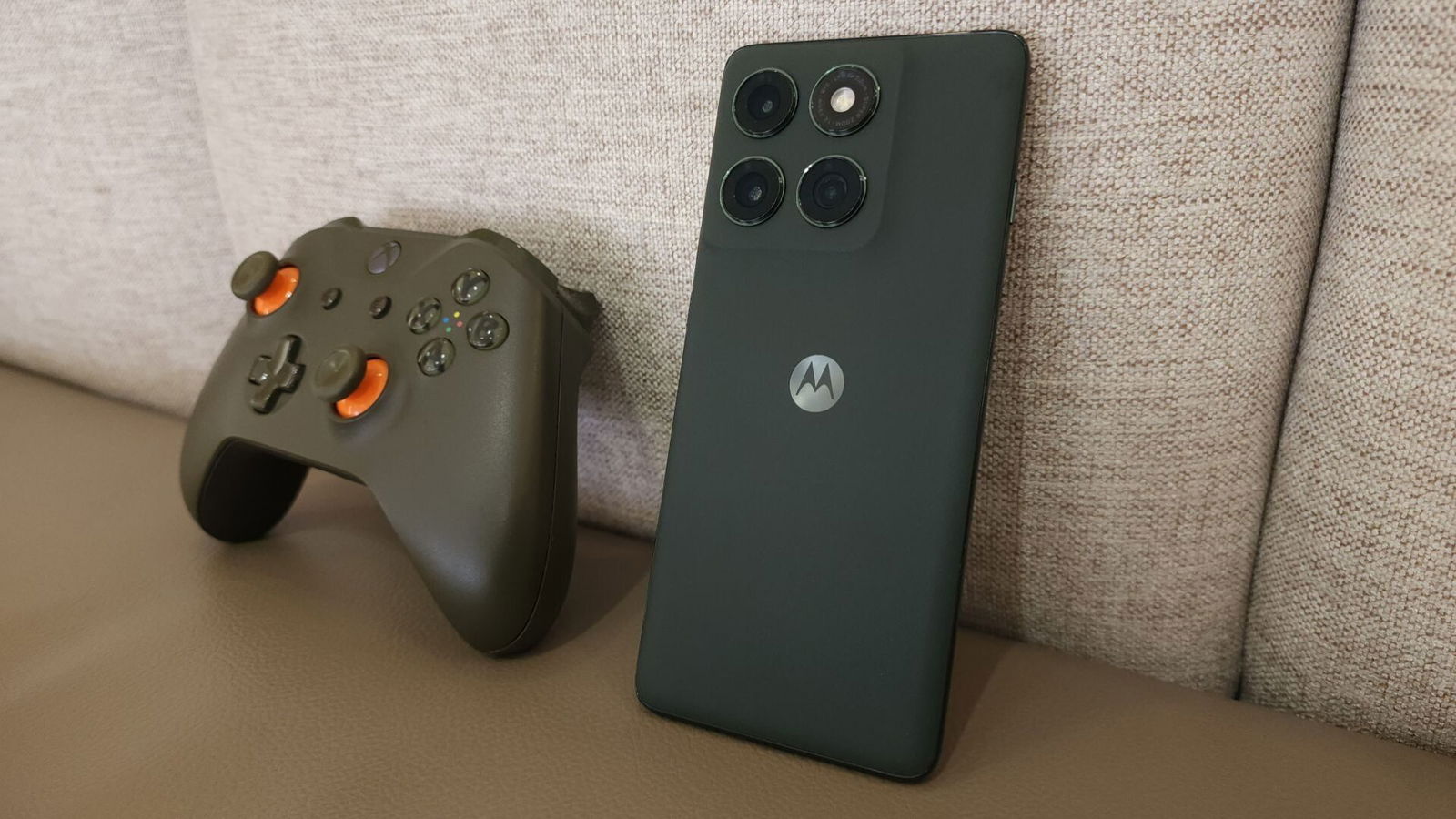
Much like my experience with the Moto G 5G back in February, the Edge’s pleather backing lends a non-pretentious sense of luxury and even adds a touch of grip in the hand, but not so much that one should be foolish enough to carry the Edge “out and about” without protection. Ironically, I’m currently using an inexpensive transparent case and screen protector with the Edge, and yet I’ve already managed to drop it twice. It’s a miracle the phone hasn’t sustained any cosmetic damage. Of course, the Edge’s Corning Gorilla Glass 7i panel is built to survive drops from up to 1.5 metres on paper, so perhaps I shouldn’t be so worried.
“With a 120 Hz Super HD pOLED screen, 5,200 mAh battery, and flagship-tier camera sensors, the Motorola Edge punches far above its mid-range price.”
Ultimately, if I drop the Edge, it’s on me. At less than 8 mm thick, the device feels considerably slimmer in my hand than my daily driver, the Samsung Galaxy S22 Ultra, measuring 5 mm narrower and a full millimetre thinner, to be exact. This makes it much easier to grip, despite my natural clumsiness. And should the Edge fall into a puddle—or, shudder to think, a toilet—its IP68 and IP96 water and dust resistance ratings, which allow for submersion in up to 1.5 metres of water for 30 minutes, give me added peace of mind. These physical protections aside, the Edge’s screen employs a quad-curved design along with an ultra-thin bezel, making it the slimmest and sleekest Moto phone in the 2025 lineup so far.
My main criticism of the entry-level Moto G 5G at launch was that while it was an impressive budget smartphone, it took several less-than-ideal shortcuts to hit its low US$199.99 price point—such as a 720p IPS panel, only 4 GB of RAM and 128 GB of storage, and an older-generation Dimensity CPU, among other compromises. The Motorola Edge improves on its older sibling in nearly every regard, replacing the IPS panel with a 120 Hz Super HD pOLED screen, doubling both RAM and storage, and significantly upgrading the Dimensity chip to a newer 7000 series model. A better Android 15 navigation button layout, 15-watt wireless charging, and Moto Secure privacy controls also round out the list of enhancements.
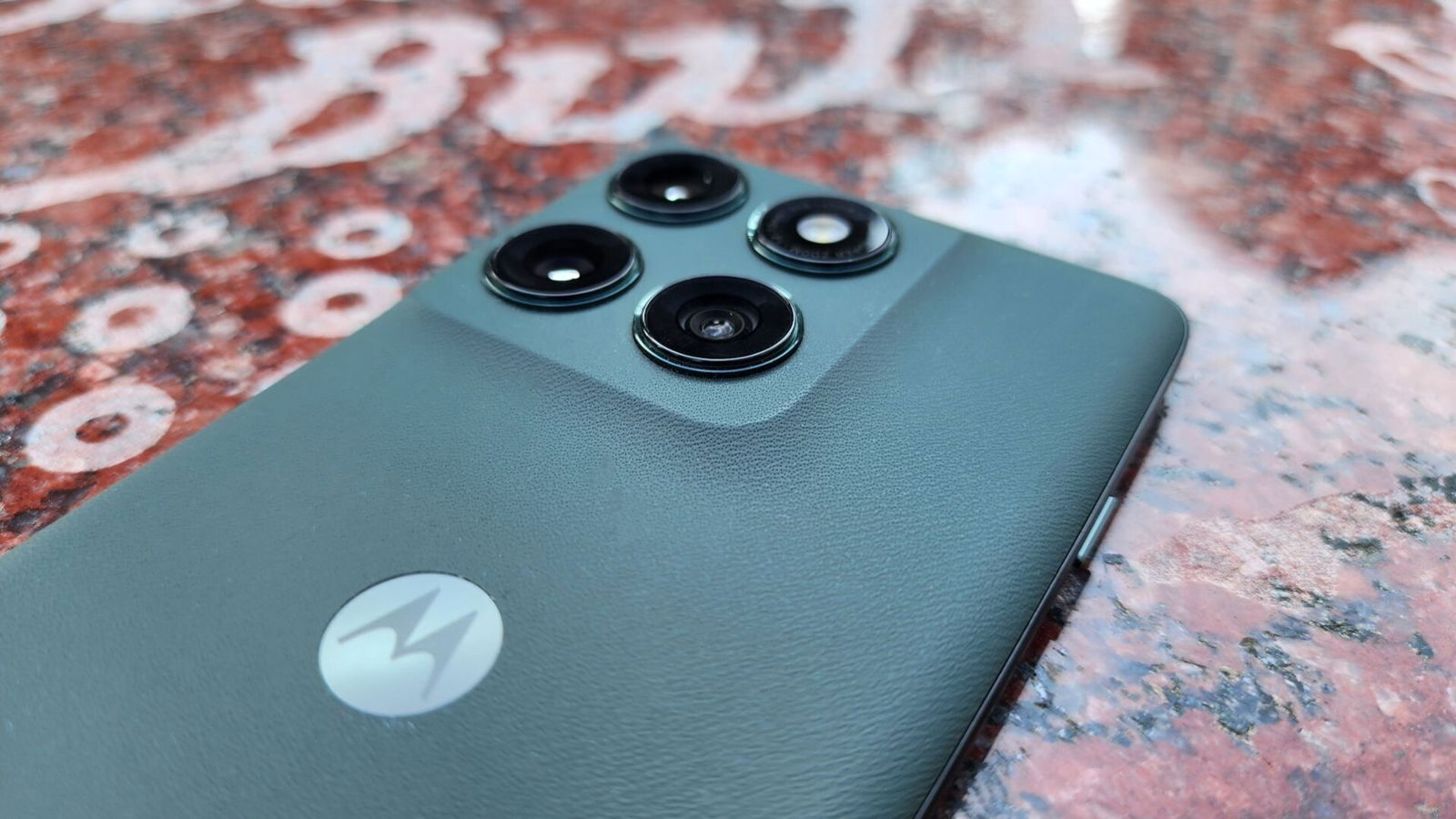
The Edge’s touch response is quick and snappy, thanks in large part to its MediaTek Dimensity 7400 CPU, 120 Hz pOLED display, and some heavy lifting in the background courtesy of RAM Boost. The latter is a buried, often-overlooked feature in several current Moto phones that allows them to use a portion of their internal storage as additional RAM. So, while the Edge technically comes with only 8 GB of LPDDR4X RAM onboard, it can convert up to an additional 16 GB of storage into RAM, for a total of 24 GB. This leads to improved performance and faster multitasking, and users can even choose to limit the added RAM to 2, 4, 8 or 16 GB—or enable dynamic AI learning to let the device decide how much memory should be used at any given time.
It’s unfortunate that a feature as useful as RAM Boost inevitably comes at the cost of some of the Edge’s internal storage. While 256 GB of total memory is still generous compared to other mid-range smartphones in the same price range, the Motorola Edge doesn’t support expandable SDXC storage like the Moto G 5G, Moto G Power or Moto G Stylus. So, if you plan on taking advantage of RAM Boost, be aware that there’s a notable trade-off in storage capacity. Also—while we’re on the subject of staple smartphone features that tend to disappear as devices become more premium—it should be noted that the Edge also lacks a dedicated 3.5 mm headphone jack.
Okay, so let’s talk cameras! The 2025 Edge comes equipped with no fewer than four lenses, upgrading the 16-megapixel selfie camera found in the Moto G 5G and Moto G Power to match its 50 MP main rear camera. It also includes a dedicated 10 MP telephoto lens and a 50 MP, 122-degree ultrawide lens with Macro Vision. The main camera is powered by a Sony LYTIA 700C sensor that handily outperforms those used in Motorola’s other mid-range models, enabling video capture at 4K30, 1080p30, 1080p60 and even 1080p120. It’s a compelling tool for content creators, even with the main camera alone. Meanwhile, the selfie camera holds its own, supporting both 4K30 and 1080p30 video recording.






As you might expect from an Android phone with so many quality cameras, the Motorola Edge offers a virtual plethora of modes, so many that the list nearly fills an entire page on a spec sheet. These range from the usual suspects like Pro mode, Portrait mode and Photo Enhancement options to Document Scanning with Adobe and Dual Video Capture with Instagram app integration. Practically every hardware or software feature tied to the cameras hides even more modes within submenus, which can feel overwhelming if you haven’t navigated an Android phone before. And there are even more AI-powered modes on the way in future OS updates, including features like “Action Shot” and “Signature Style.”
As for simply taking photos, I came away quite impressed with both the main and selfie cameras on the Edge, particularly when capturing daytime shots. The phone is Pantone Validated and Pantone SkinTone Validated, which is intended to produce detailed, colour-accurate images, and in most cases, it delivers. During my tests, I brought along my Samsung Galaxy S22 Ultra as a comparison device. While the Ultra remains superior on paper in many ways, it was consistently “edged out” by Motorola’s new smartphone when it came to colour accuracy, at least as judged by the naked eye.





The Motorola Edge’s dedicated telephoto lens offers up to 30x magnification using “Super Zoom,” though its optical zoom range covers only a tenth of that (3x), with digital zoom accounting for the rest. Unsurprisingly, photos captured within the optical range appear cleaner and are less susceptible to visual noise or smearing. With digital zoom, you get what you get. In a couple of my past lives, where I sold digital cameras and smartphones for a living, I would always set customer expectations by saying, “It’s always nice to have when you just need to get the shot, but if you want a quality image, you’re always better off getting closer to the subject.” That advice holds true here as well.
The ultrawide lens is very roomy and does an excellent job of capturing one’s surroundings without feeling cramped. It’s ideal for photographing buildings, trees, large foliage areas, group shots or wide vistas. That said, it has its limits: when recording video, it isn’t possible to switch automatically from the main camera to the ultrawide by zooming out. Users will need to stop recording, switch to ultrawide, and then resume shooting—and vice versa. The Macro Zoom is a bit of a mixed bag. It can get users impressively close to smaller subjects—better than many smartphones out there—but don’t expect National Geographic-level insect magnification.


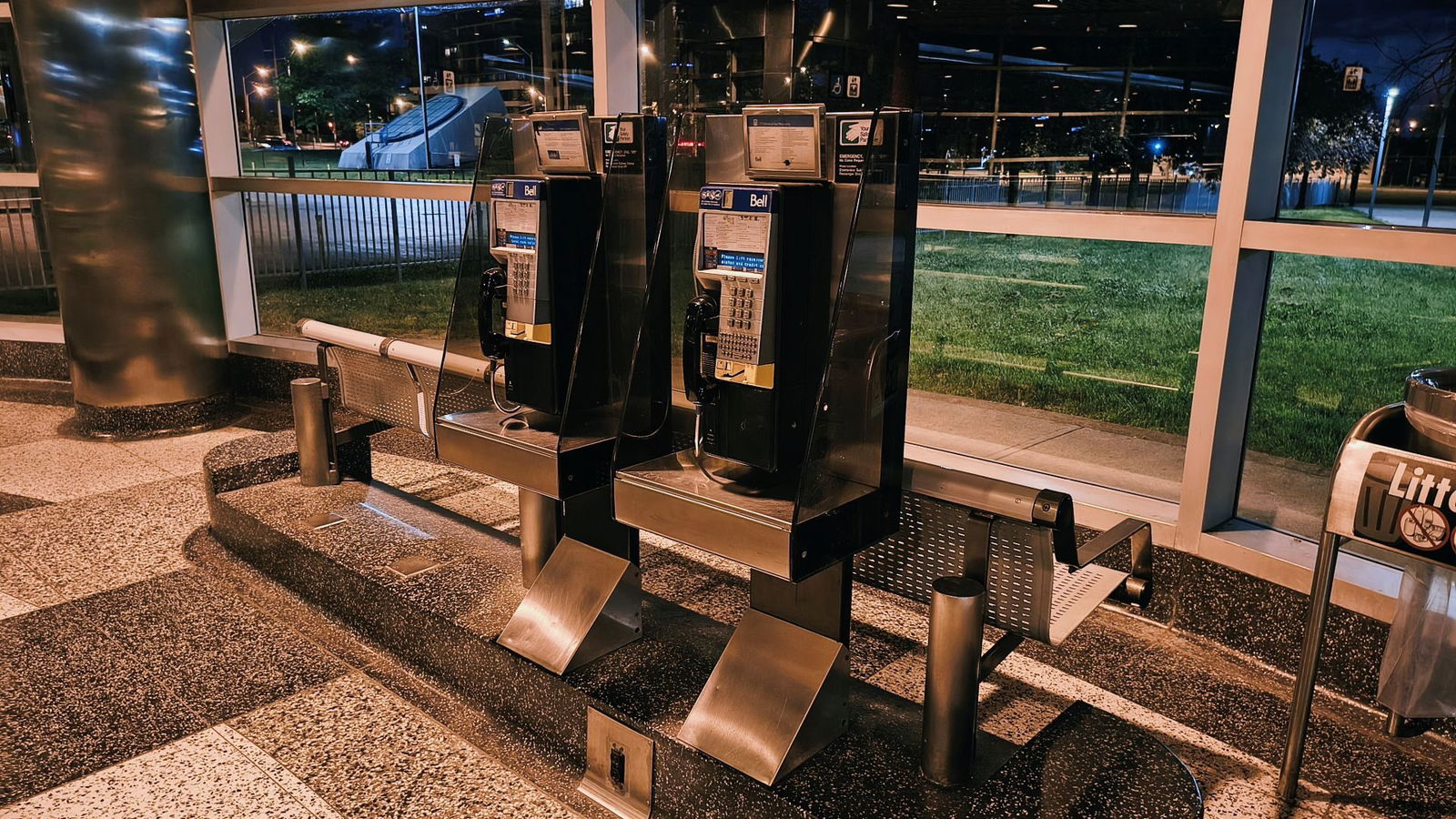


Generally, I’m used to poor results in low light or nighttime photography, regardless of the device. But contrary to those expectations, the Motorola Edge is a pleasant exception, especially with the Auto Night Vision feature enabled. Night selfies are surprisingly effortless, thanks to the pOLED screen brightening to illuminate the subject like a portable LED ring light. The result is cleaner, more vibrant images with far less touching up needed afterward. Using the panel’s high brightness and the front camera’s Ultra HDR capabilities in this way isn’t new to premium smartphones, but it’s extremely well-implemented here and largely hassle-free to operate.
“The Motorola Edge doesn’t just bridge the gap between budget and flagship—it redefines what a mid-range phone can offer in 2025.”
Moving on from the Edge’s quartet of cameras, the real star of the show, in my opinion, is the Motorola Edge’s gorgeous 120 Hz pOLED display. In a comfortably darkened room, it feels like holding a scaled-down OLED TV in the palm of your hand. With Super HD resolution (2,712 x 1,220) and a peak brightness of 4,500 nits, users can enjoy inky blacks and bloom-free local dimming while watching or playing their favourite content in HDR10.
The Dolby Atmos–tuned dual stereo speakers are clear, crisp, and even bring in some impressively strong bass—perfect for those moments when you need your Cyberpunk: Edgerunners fix but have somehow misplaced your headphones. Naturally, watching your own content on the pOLED display is also exceptional, even outdoors in direct sunlight. While peak brightness can drop to 1,400 nits in those conditions, the screen remains more than serviceable.
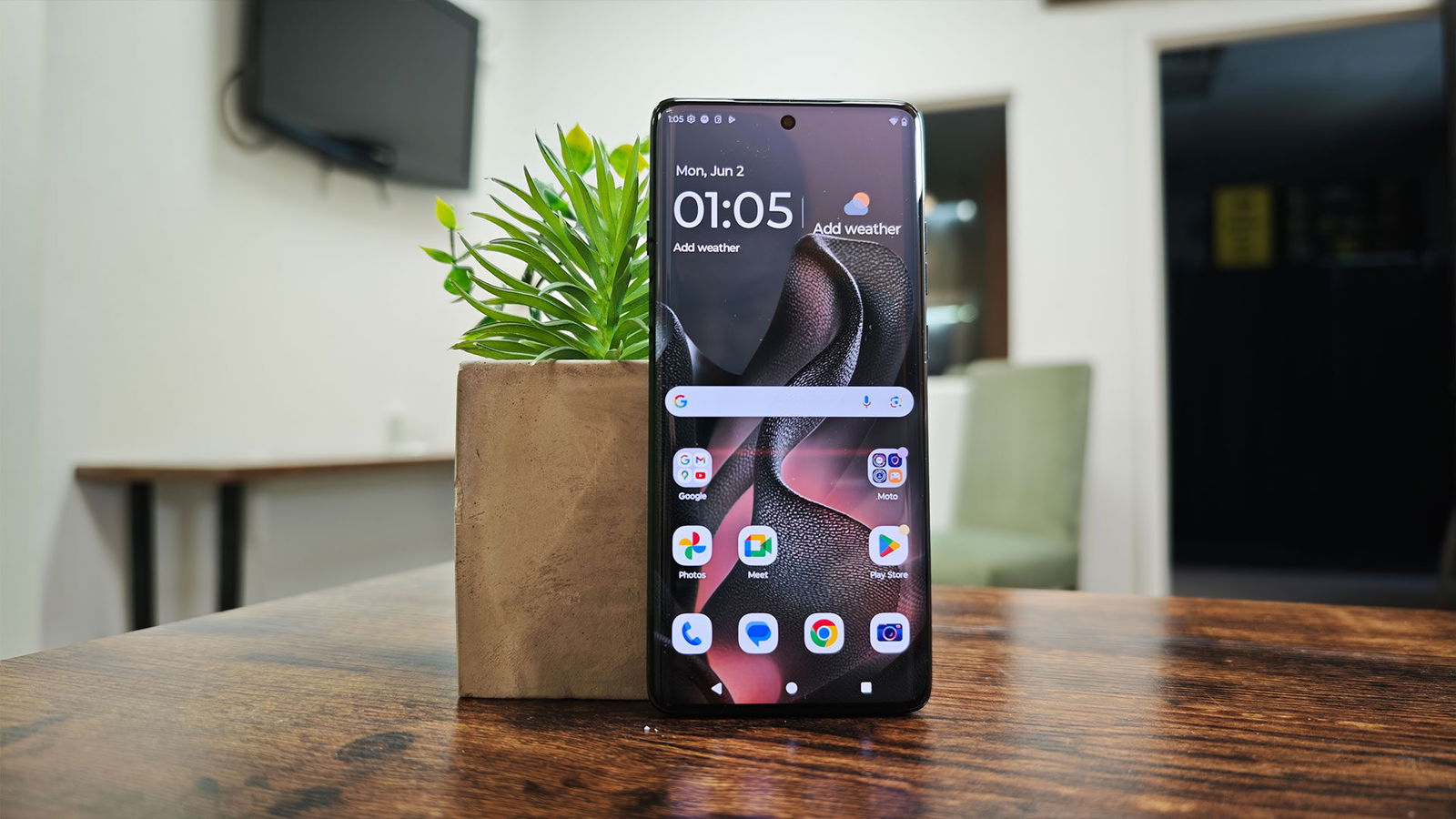
Finally, I’d be remiss not to mention the Motorola Edge’s phenomenal battery life. It houses a robust 5,200 mAh battery that belies its slender frame, delivering up to two full days of power on a single charge. Even more remarkable is how quickly the Edge can recharge—just seven minutes provides enough juice for a full day, and less than an hour gets you back to two full days. The previously mentioned 15-watt wireless charging is a convenience I’ve recently come to appreciate as well. The downside, however, is that a Motorola TurboPower charger or an equivalent PD charger is required to achieve those speeds, and unfortunately, one isn’t included in the box—you’ll have to purchase it separately.
Now, as much as I enjoy using the Edge, there are a few perplexing design decisions and minor frustrations I need to address, first and foremost being the on-screen fingerprint reader. I may be part of a dying breed, but I remain a staunch advocate for fingerprint readers located on the power button—or alternatively, on the back of the phone—rather than under the screen. The latter method forces me to hold the phone at an awkward angle for my fingerprint to register, which increases the risk of dropping and damaging the device.
I understand why some prefer under-screen placement for accessibility, but I’d argue that positioning the sensor on the back or side—where fingers naturally rest—is far more ergonomic. What confounds me, though, is that Motorola doesn’t seem committed to a single approach. The Moto G and Moto G Power integrate their fingerprint readers into the power button, while the Moto G Stylus and Edge use under-screen sensors. Perhaps Motorola could consider adding a secondary sensor in future models. After all, the Edge apparently has room for the new Moto AI button, located on the upper-left side of the device.
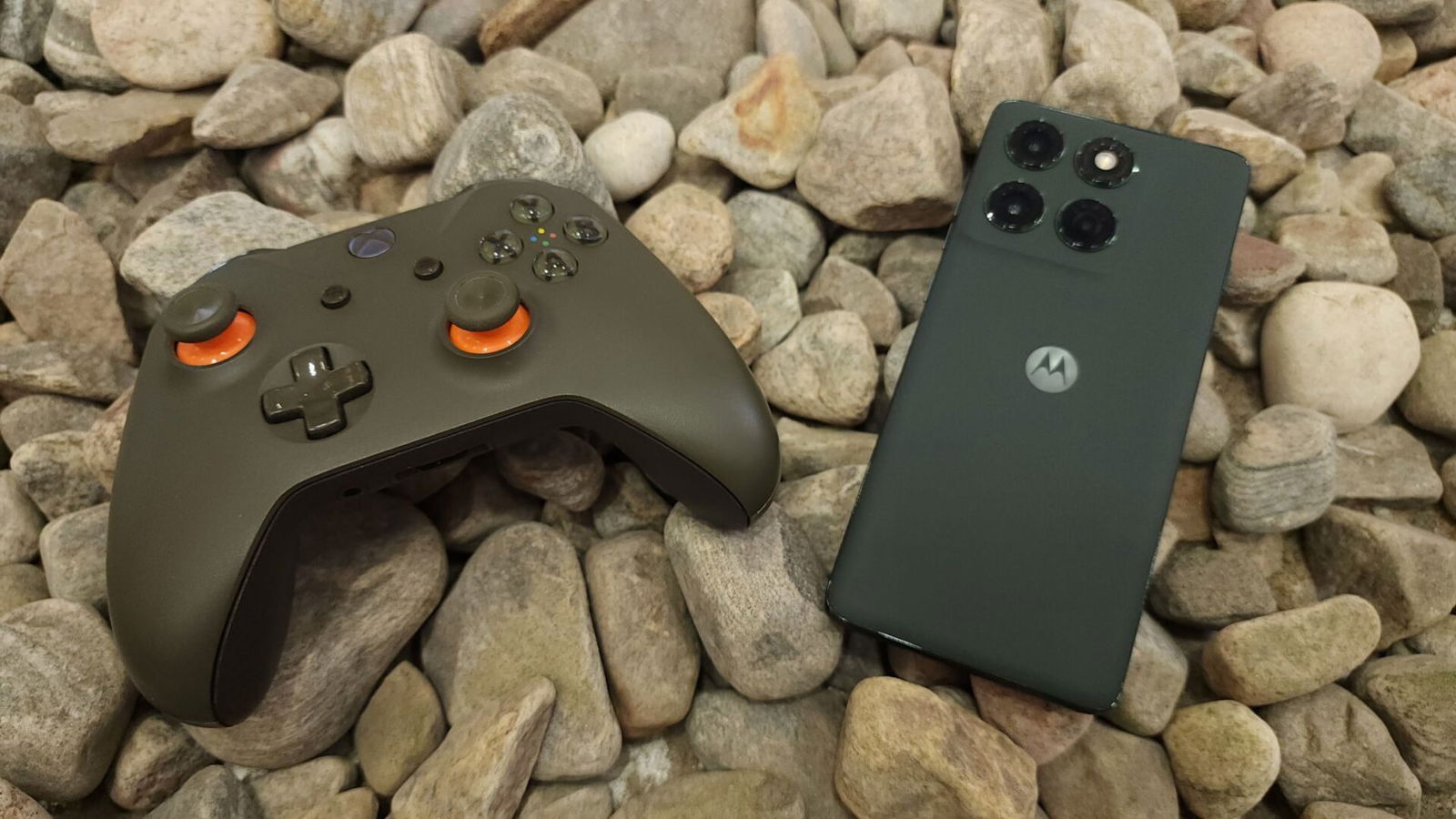
The Moto AI key is a contentious addition, in my opinion. It’s a physical button dedicated to the Edge’s bespoke AI features, such as using voice recordings to take notes and create reminders, summarizing recent notifications, playing mini-games, creating music playlists, and even generating AI-based images in the form of stickers, wallpapers, avatars and more. These are all things I either loathe doing—because I find them creatively hollow as a content creator—or find largely pointless, given that the Edge already comes with a far superior digital assistant in the form of Google Gemini.
“Despite some questionable design choices, like the non-remappable Moto AI button, the Edge still manages to deliver a polished and satisfying user experience.”
What’s truly frustrating about Moto AI, if you choose not to use it, is that while the software can thankfully be removed from the home screen, the physical Moto AI key cannot be remapped. It only launches Moto AI–related actions, such as voice recording, note-taking, or waking the Moto AI assistant. It literally serves no other purpose, which feels entirely wasteful. Perhaps this will change in a future update, but for now, its presence is more of a nuisance than a feature for those who don’t rely on Motorola’s AI ecosystem.
Grumblings about AI, buttons and sensors aside, there’s honestly little about the Motorola Edge (2025) that I can reasonably criticize. All Motorola really needed to do to impress me was improve on the weak points of the Moto G 5G, but the Edge goes far beyond that. It features a stunning borderless pOLED panel, four high-quality, high-resolution cameras built to handle nearly any realistic shooting scenario, much-improved software, and a lighter, more attractive—yet still durable—frame that feels better in the hand.
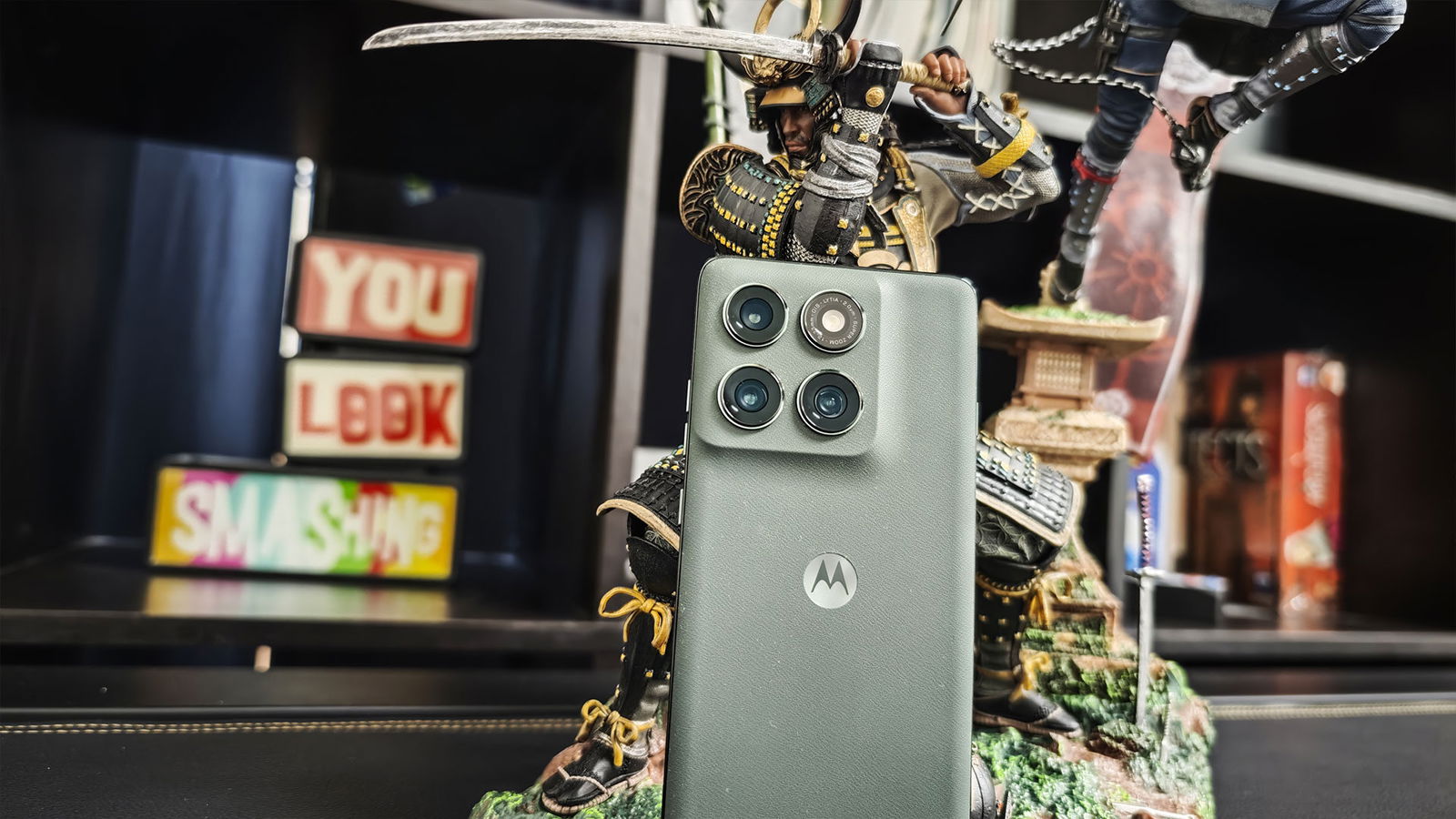
Naturally, all these improvements come at a cost. But at a very reasonable MSRP of $549.99, the Motorola Edge packs an abundance of premium-level features that, pound for pound, put it within striking distance of not only Motorola’s flashier, higher-end devices but also the top offerings from its fiercest rivals.
